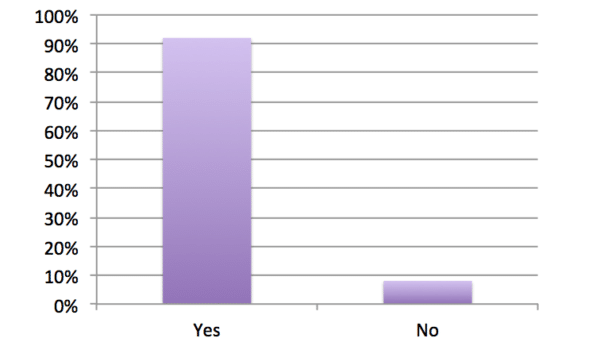
There was a time when almost all doctors would exclusively focus on patient care. A doctor from the Sermo community states, “Not so much anymore. Several physicians, for numerous reasons, are jumping ship and doing Plan B: pursuing non-clinical alternatives like authoring novels or investing in real estate, or, more commonly, following alternative clinical pathways, where they apply their clinical expertise and experience in ways other than seeing 20 patients a day.”
Real estate is just one of the opportunities physicians are pursuing as a non-clinical alternative to income. Many investors own multiple pieces of real estate to generate a viable income stream that serves as primary or supplemental income.
Investing in real estate is an effective solution for physicians wanting to expand their income streams. It allows physicians to leverage the money they’ve earned to make more income. Investing also comes with several tax benefits for physicians and creates cash flow that can be passive or active, depending on your investment goals.
Sermo found that nearly half (47%) of physicians report currently having some form of passive income. Doctors inside Sermo’s physician-only community regularly share real strategies for diversifying income through honest conversations and real-world experience. Join for free to explore how physicians are navigating today’s investment landscape.
Why physicians should invest in real estate
Here are a few reasons why physicians should invest in real estate:
Financial independence beyond clinical income
While clinical income provides financial stability, some physicians desire financial independence beyond this. Over one-third (38%) of Sermo survey respondents reported earning between $1,000 and $15,000 annually from their side gigs.
Real estate investment is a lucrative financial path that enables physicians to earn additional income or transition into a new role.

Passive income potential and tax benefits
There are many opportunities to create passive income with real estate investing. Real estate investing isn’t like working a regular 9-5 job. It allows investors to make money passively without extensive effort each day.
Physicians who want to generate passive income with real estate investing can look at options like real estate investment trusts (REITs), remote ownership, and real estate funds.
Additionally, real estate investors have many tax write-offs available to them. Some common expenses that can be written off on taxes to reduce tax liability include mortgage interest, operating expenses, and property insurance premiums.
Hedge against inflation and market volatility
Real estate generally has worked as a hedge against inflation. As inflation rises, so do property values and the amount that can be charged for rent.
Market volatility is also a concern when investing in general. Luckily, real estate investing is a great way to ride the wave of a volatile market. This is because real estate projects typically have a holding period of at least two years, allowing investors to hold on when the market is volatile and sell when the market is stable.
Real estate investing creates stable cash flow, has many tax advantages, and is a great way to make consistent side income for physicians. And as an OBGYN from the US notes on Sermo, “A “side hustle” can leverage the skills, experience, and perspective of a physician’s experience for the benefit of a greater circle of people.”
5 Types of real estate investments for physicians
Real estate investment comes in many forms and can offer a great balance between a physician’s clinical work and alternative financial interest. Here are five types of real estate investment opportunities physicians can enter to earn a passive income while working as doctors.

Residential real estate
Real estate investing is considered real property, including land and anything permanently attached to or built on it. This means properties like single-family homes, multifamily properties, condos, duplexes, and townhomes.
Residential real estate is for living, which means it’ll be zoned for housing. This means the land cannot be used for anything else besides residential purposes.
The value of a residential real estate property depends on several factors, including the size of the property, location, and shifts in the market. With residential real estate, most investors will purchase a property and flip it for profit or rent it out to tenants. Both are great options and can be a lucrative opportunity for physicians.
Commercial real estate
Commercial real estate investing involves acquiring properties intended for business. The goal is to generate profit through rental income, appreciation, or both.
There are many types of commercial real estate property to invest in. Office buildings, medical office spaces, retail spaces, and industrial complexes are just a few commercial real estate investment opportunities to consider. Physicians who invest in commercial real estate benefit from potential high returns and diversification opportunities.
Short-term rentals
Short-term rental investments involve purchasing properties and renting them out for short-term stays (30 days or less). Short-term rentals can include entire homes, condos, apartments, and even individual rooms within a home.
Short-term rentals are listed on platforms like Airbnb, VRBO, and HomeAway. These platforms act as a middleman to connect owners with guests.
Investing in short-term rentals is an excellent idea for physicians. Short-term rentals can generate higher rental income per night compared to long-term rentals. Additionally, by selecting a property in a desirable tourist location, the value of the property appreciates over time.
Real estate syndications & REITs
Many physicians prefer a passive income option that enables them to seamlessly work as a doctor while bringing in consistent passive income. Real estate syndications & REITs are a great option to achieve this.
A real estate syndication is a partnership between investors where they pool their resources to invest in properties usually larger and more profitable than what they could afford individually.
A REIT is a company that owns, operates, or finances income-generated real estate. REITs provide investors with a way to earn a share of the income without having to buy, manage, or finance any company themselves.
Similar to owning real estate property, the majority of REIT dividends are taxed as ordinary income, meaning that investors will continue to be taxed based on their marginal tax rate, with taxation between 10%-37% However, a REIT can also be allocated as capital gains and return of capital.
Medical office buildings
For a specialized investment opportunity, physicians can consider investing in medical office buildings. These investments can be a good income opportunity, offering consistent returns and a stable tenant base due to the demand for healthcare services.
Medical office buildings also have a great potential for appreciation since healthcare services are continuously on the rise, causing the value of medical office buildings to increase.
Passive vs active real estate investment strategies
Once you decide to become a real estate investor, you’ll have to determine whether you’ll adopt passive or active real estate investment strategies.
Passive real estate investment is a hands-off approach to investing, often allowing investors to engage in other endeavors. Active real estate investment is more hands-on and requires significant time and involvement.

Passive Real Estate
There are two approaches to passive real estate investment: direct and indirect. A direct approach involves purchasing all or part of a property and hiring a management company to take care of operations.
By working with a management company, this allows investors to be hands-off. An indirect approach involves putting capital into a real estate syndication or REIT, where investors can gain indirect exposure to the investment without owning physical property.
Active Real Estate
Active real estate may be a great option for physicians looking for more involvement in their second income stream.
Active real estate means investors are closely involved with all aspects of managing and developing their real estate with an active real estate strategy. These investors are usually independent and in control over as much as possible. Additionally, investors tend to purchase properties for quick returns by flipping or using them for regular rental income.
Difference between passive and active real estate investment
The main difference between passive and active real estate investment is the level of involvement in the investment. Active real estate investors are involved in the day-to-day operations of the property, including managing tenants, handling repairs, and making strategic decisions.
Passive real estate investors delegate tasks, which allows investors to be more hands-off. They also have limited control and rely on the expertise of others to make strategic decisions.
How to get started in real estate investing
Doctors in the US looking to get ahead might do well to consider the practices of their follow doctors in other parts of the world. A primary care doctor in another country notes, “Outside of my work as a doctor, I run a small business that gives me extra income. It helps me afford things my medical salary alone can’t easily cover, all without stepping away from my role as a physician.”
If you’re looking to boost your income, there’s no better time than now for physicians to get started in real estate investing.
Diversifying income with real estate empowers physicians to care for patients while earning a passive income. Before starting your real estate investment journey, here are a few things to keep in mind:
Assessing your financial goals and risk tolerance
The first thing to do before investing in real estate is to determine your financial goals. Are you looking to make a passive income or do you want to earn aggressively? This will determine your investment vehicle and help you understand what you need to do to reach your financial goals.
Also, consider your risk tolerance. Risk tolerance is an investor’s general ability to withstand the risk inherent in investing. Understanding your risk tolerance will help you make more informed decisions when looking at investment opportunities.
Understanding financing options (loans, leverage, partnerships)
Physicians also want to understand what financing options are available. Here are a few options to explore:
- Loans: Some loan options for real estate investment include conventional bank loans, hard money loans, private money loans, and home equity loans.
- Leverage: You can use leverage to finance your real estate investment. For instance, you may put down 20% of the money and borrow the rest for the property. By doing this, you can use a portion of your money to fund your real estate investment.
- Partnerships: Real estate partnerships enable you to pool resources and capital to invest in properties. Having a partnership can give you access to larger deals and lower your risk.

Building a real estate network (agents, lenders, property managers)
Having a strong real estate network gives you access to new opportunities, market insights, partnerships, and client leads. Here are some of the people you should have in your network:
- Real estate agent: a licensed professional who helps buy, sell, or rent property.
- Lender: an individual, company, or institution that provides loans or extends credit to others.
- Property manager: an individual or company hired by a property owner to oversee day-to-day operations.
Due diligence: market research, property evaluation, and ROI calculation
Lastly, physicians must do their due diligence to ensure they are successful in the real estate investment market. To begin with, it’s essential to do market research. This will provide valuable insight into customer behavior to help you make better choices. Some information you should collect during market research is current purchasing trends, preferences, and any patterns in the location.
Additionally, property evaluation is crucial as it is an important factor in risk mitigation. Without understanding the valuation of a property, this can lead to overpaying for assets and cause significant loss if market conditions change.
There are several valuation methods that investors use. One method is Discounted Cash Flow (DCF) Analysis, which estimates an asset’s value by forecasting its future cash flows and discounting them back to their present value. Another common valuation method in real estate is Net Asset Value (NAV), which calculates the value of an entity’s total assets minus its liabilities.
Lastly, physicians need to think about ROI. After all, you don’t want to invest in something without turning a profit. It’s best to calculate your potential ROI on any given investment to see if it is worth it.
You can use the ROI formula to help you gauge an investment. The ROI formula is ROI = (Net Profit / Total Investment) x 100, where net profit includes any income from the property, property appreciation, and tax benefits. Total investment refers to the initial purchase price and associated expenses.
Ready to grow your physician income through real estate?
Real estate investment is a great opportunity for doctors to build a viable secondary income. Doctors investing in real estate can be an excellent hedge against inflation and market volatility, can be approached passively or actively, and can be quite lucrative for committed investors.
Over 1 million MDs and DOs are part of the Sermo community across 150 countries. We offer a unique physician online community that allows doctors to communicate about issues important to them and their patients. Whether you want to expand your clinical practice or talk investment, Sermo can connect you with like-minded individuals.
Whether you’re just getting started or already own property, you’ll find support, shared wisdom, and strategy inside Sermo’s physician-only community. Join the conversation and start building wealth today.













